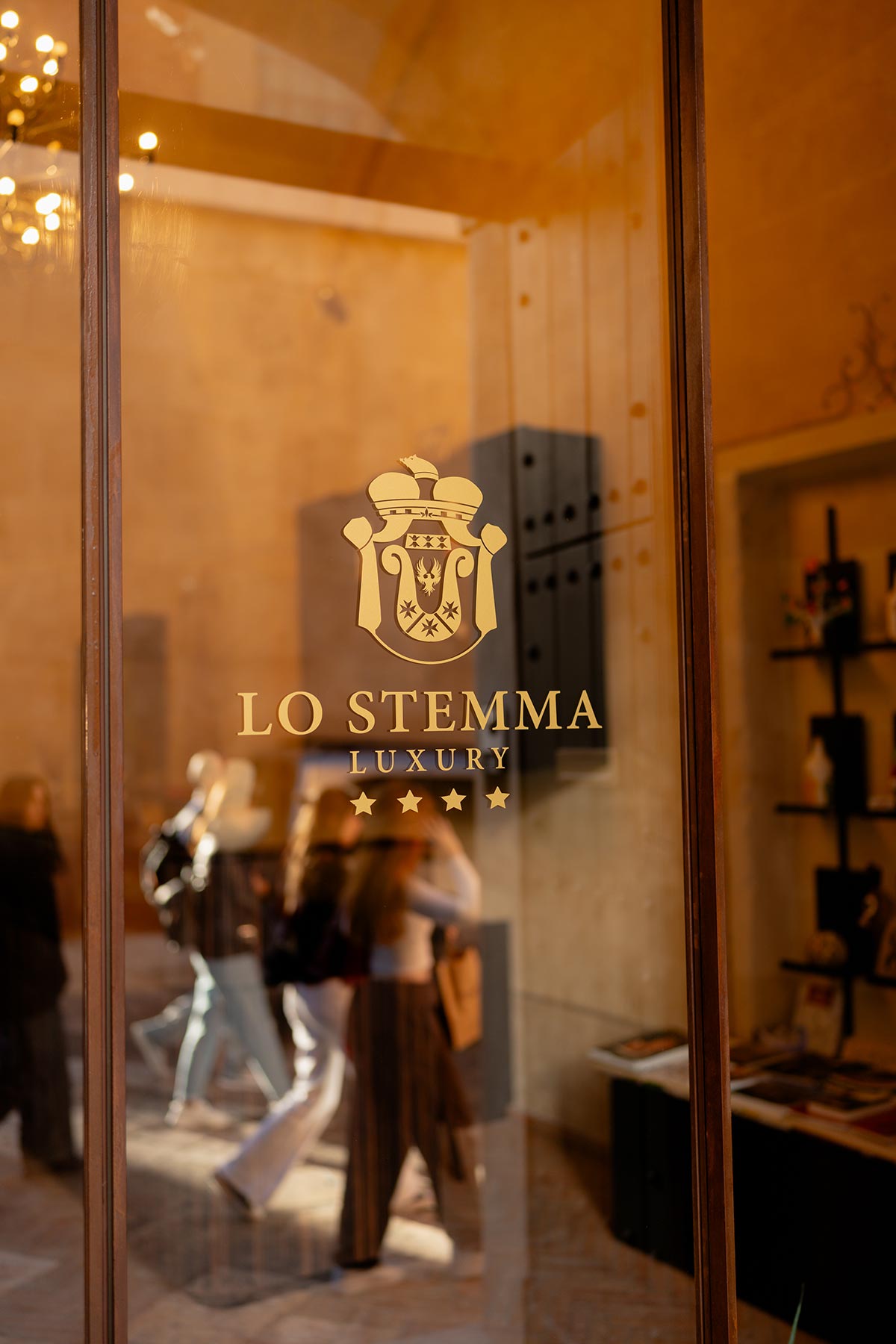Why the coat of arms?
We chose to use this representation for the Stemma Luxury Hotel, in recognition of its symbolic heraldic meaning which like Matera, has its roots in the depths of human history.
But mostly because of its function in representing the history of the palace, which witnessed the presence of the Malvinni Malvezzi dukes of Matera for centuries, thus underlining a desire to preserve historical continuity amid the vicissitudes that have affected this building over the centuries.
the Portal
The Malvinni Malvezzi coat of arms presents on the entrance portal of this palace is original and was made entirely of tuff. It is colored in light tones following a refined restoration respecting tradition and its history.
Composed of a bipartite shield it is trimmed with a gold band surmounted by the monocephalic eagle in a red shield. In the upper partition, three golden lilies stand out on a red field with a blue background. In the second partition, a mustache divides three Maltese crosses on a red background. The whole is wrapped in a red cloak that branches out from a ducal crown from which emerges the head of a wild boar, which is now irrecoverable.
the Coat of arms
The coat of arms is an identifying element for a person, a family or a social group, made up of a unique system of codified representations, aimed at visually determining their origin or belonging.
the Origins
Born from the Roman vexillum, a standard used by the Roman army as an insignia that identified a legion, a department or a commander within the camps, or to distinguish enemies during battles. Coat of arms were originally used as distinctive symbols for leaders, soldiers and knights, or identified military units linked by loyalty to a leader or sovereign, and could be used in tournaments to distinguish knights. They were typically placed in sites easily distinguishable from afar or amidst chaos, such as on shields, on the caparisons of horses or on signs.
Over time they became practically inseparable from noble titles and regulated through the use of rigid rules, widespread and accepted throughout Europe. These rules standardized the structuring of the main elements, giving each partition a specific meaning in appearance, rank or hierarchical order. These can be seen as bands or the presence of helmets, crowns and cloaks, but also of the support on which to represent the symbols, such as the shield for its easily recognizable shape, or the colors used, mostly easily available and unique, such as black, red, blue, gold, green. Finally, symbols, simple and easy to reproduce, corresponding to shared and known symbols, which remained unchanged over time, therefore usable as identification tools like names.
Today
Coat of arms now seem to have fallen into disuse, limiting themselves to representing districts and cities, provinces and regions, or held by the heirs of fallen aristocracies, used during historical re-enactments, but ultimately they have ceded to function like logos like those that make branded clothing recognisable.


